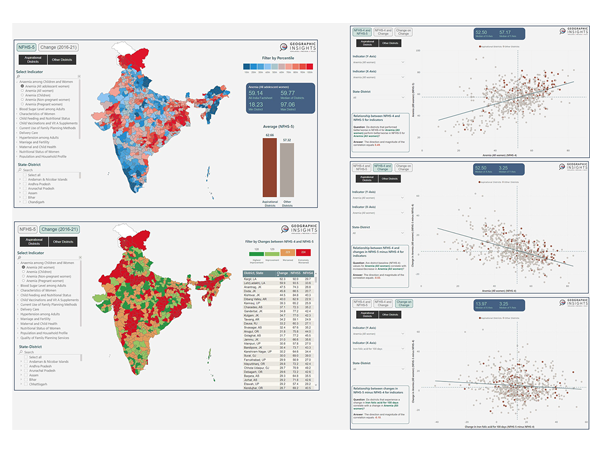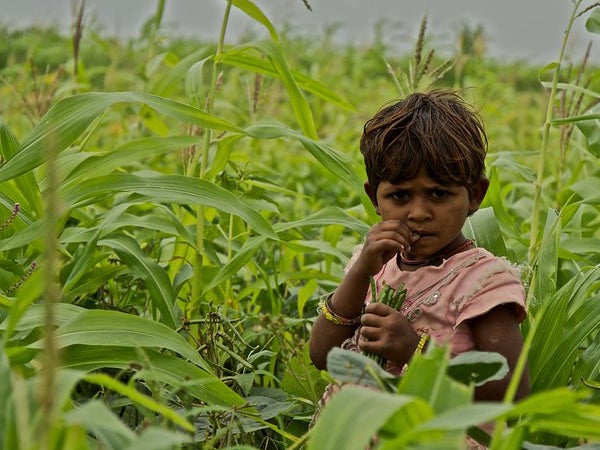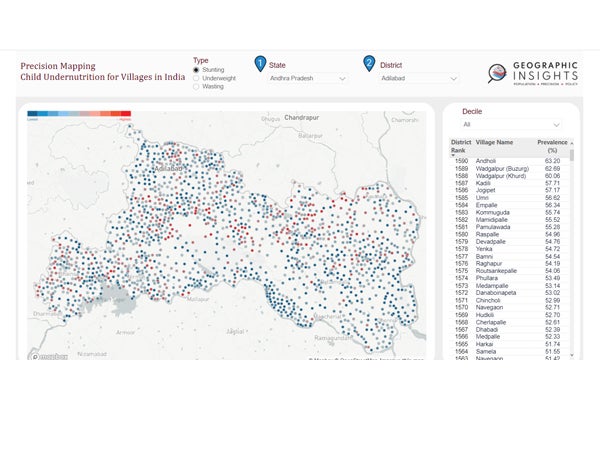When assessing the effectiveness of a large-scale, federally funded program such as Head Start—a program designed to better prepare children ages 3-5 from low-income families for school—it is limited to only look at the Average Treatment Effect given the “considerable systematic heterogeneity within population between individuals.” This study applies complex variance modelling, an extension of multilevel modelling, to capture the variance, as well as the mean, in order to shed…
First-ever dashboard displaying life expectancies on the U.S. Congressional District level
Despite persistent health disparities in the United States, health data on the Congressional District level continues to be meager. “As our nation transitions towards recovering from the COVID-19 pandemic and reducing health disparities, it is imperative for politically relevant public health data to be available in a clear and direct manner,” said Dr. S V Subramanian, Harvard Pop Center faculty member and one of the leading researchers at the Geographic…
India Policy Insights designated a “Key Initiative” for the Government of India
India Policy Insights (IPI), the flagship project of the Geographic Insights Lab at the Harvard Center for Population and Development Studies, has been designated as a Key Initiative of NITI Aayog (National Institution for Transforming India), the official policy design and innovation think tank for the Government for India. This partnership will allow NITI to strengthen its monitoring capacity by leveraging IPI’s online geo-visual data platform that synthesizes and visually…
Continue reading “India Policy Insights designated a “Key Initiative” for the Government of India”
Mobility between neighborhoods found to play significant role in race and class disparities in COVID-19 infection
While it is well documented that neighborhood plays a role in the risk of COVID-19, a paper published in Science now sheds light on the pathways of possible transmission by using data from mobile phones to capture the neighborhoods visited by residents, and the neighborhoods of those who visit. Harvard Pop Center faculty members S V Subramanian and Rob Sampson are among the authors on the paper.
Researchers call into question the accuracy of using stunting as a metric for measuring undernutrition among children in India
S V Subramanian and Rockli Kim, along with their colleague Omar Karlsson, have authored a timely commentary published in The Lancet Global Health in which they caution policy makers in India — who are currently reformulating India’s flagship nutrition program, POSHAN Abhiyaan — about utilizing the stunting metric to determine the effectiveness of interventions targeting child undernutrition. Since the height of a child is partially genetically determined by the height…
When estimating global child undernutrition, are the standard measures enough?
An investigation published in JAMA Network Open Global Health reports that currently relied-upon anthropometric measures (i.e., stunting, underweight, wasting) may not be comprehensive enough to accurately assess global child undernutrition. Harvard Pop Center researchers Rockli Kim and S V Subramanian, along with their colleagues Markus Heemann and Sebastian Vollmer, suggest that dietary and food-based measures should be factored in as well. Photo: EU Civil Protection and Humanitarian Aid on Flickr
Mass vaccination campaign in India may have contributed to spike in cases
Professor S (Subu) V Subramanian, PhD, has authored a comment in The Lancet Global Health in which he cautions that the mass vaccination campaign in India may have contributed to the recent increase in COVID-19 cases there. He urges leadership in India to rethink its vaccination strategy to reduce virus spread by preventing overcrowding and enforcing non-pharmaceutical interventions, such as masking and social distancing, at vaccination centers. On IndiaToday.com, Subu…
Continue reading “Mass vaccination campaign in India may have contributed to spike in cases”
“In India, anything and everything is a super-spreader event”
Harvard Pop Center faculty member S (Subu) V Subramanian, PhD, tells The Harvard Gazette that “in India, anything and everything is a super-spreader event.” A visualization dashboard of COVID-19 vaccine distribution in India by Subramanian’s Geographic Insights Lab was also cited by The New York Times in an article describing the recent and devastating surge of infections in the county.
First study to map child undernutrition in India by village shows greatest variation at these micro levels
A study published in PNAS by Harvard Pop Center Visiting Scientist Rockli Kim, ScD, faculty member S V Subramanian, PhD, and colleagues that utilizes “state-of-the-art data science techniques” to map and predict child undernutrition across the nearly 600,000 villages in India now provides governments at the most local level with this critical information about their constituents. To learn more about the potential value of such breakthrough, precision mapping, read the…
Geographic Insights Lab rolls out two new interactive dashboards: one for tracking NFHS data in India, the other for COVID-19 vaccination by U.S. congressional district
The National Family and Health Survey (NFHS) provides critical data on India’s health, nutrition, and population indicators. The Government of India utilizes many of these indicators to formulate policies and track its progress. The team at Geographic Insights Lab presents an interactive dashboard that systematically allows multiple stakeholders to compare 55 indicators for 300+ districts in India. These indicators can also be compared across 300+ Parliamentary Constituencies in India with…







